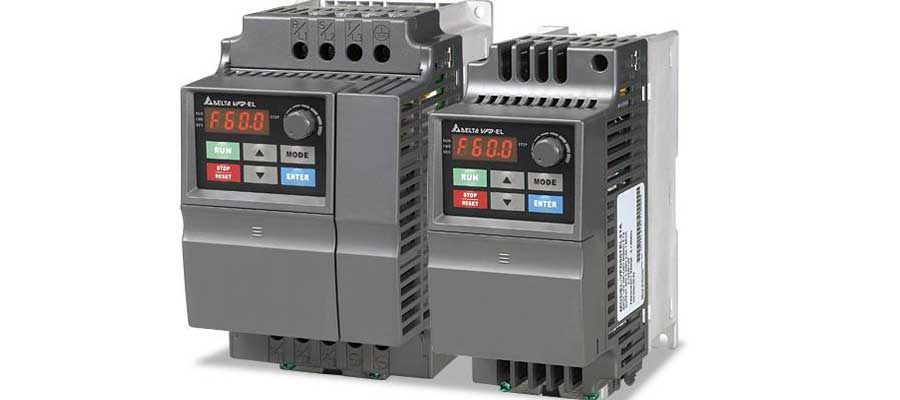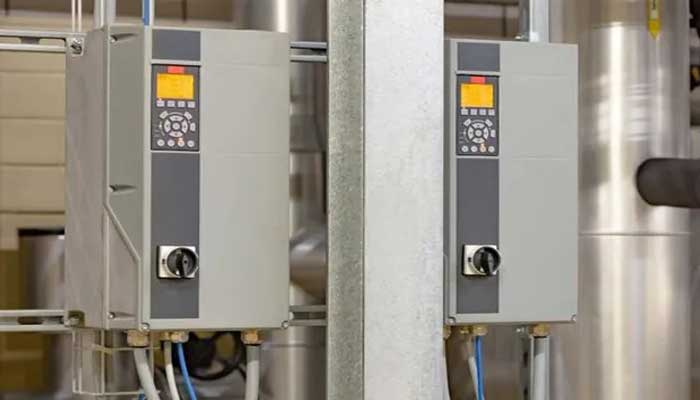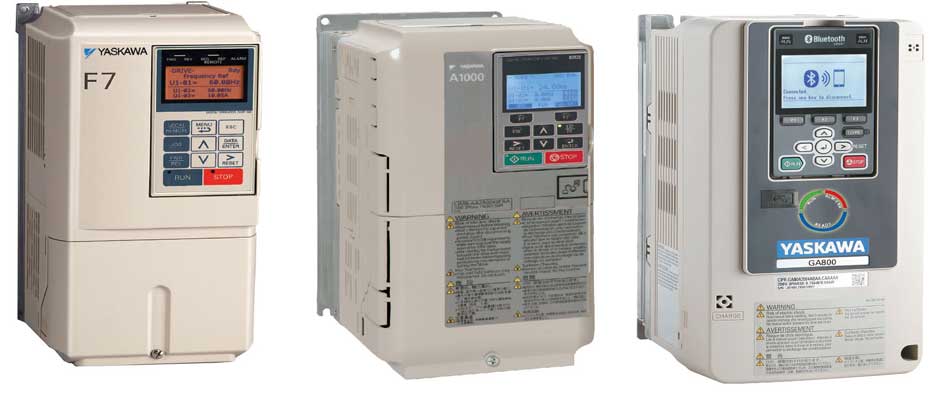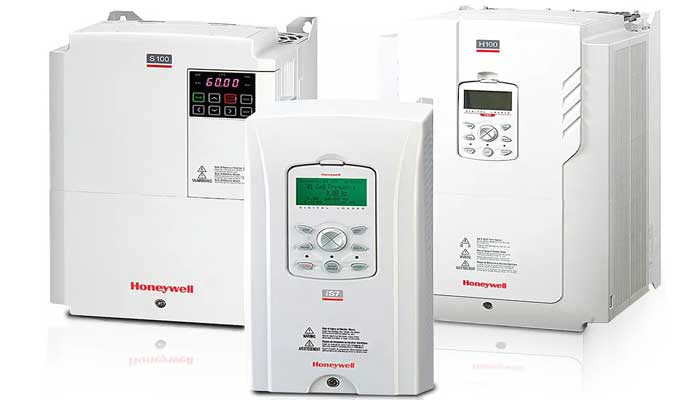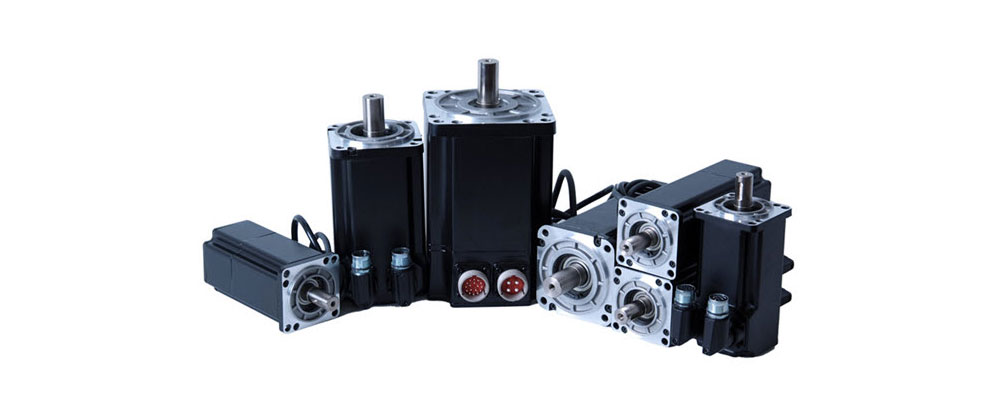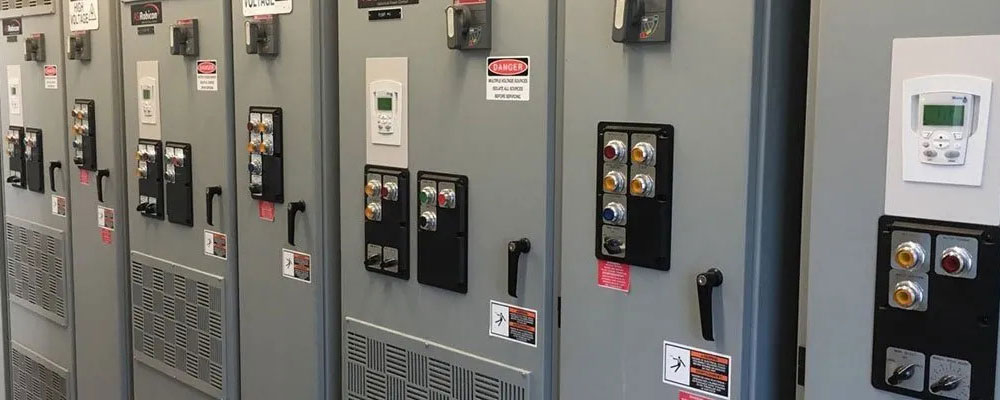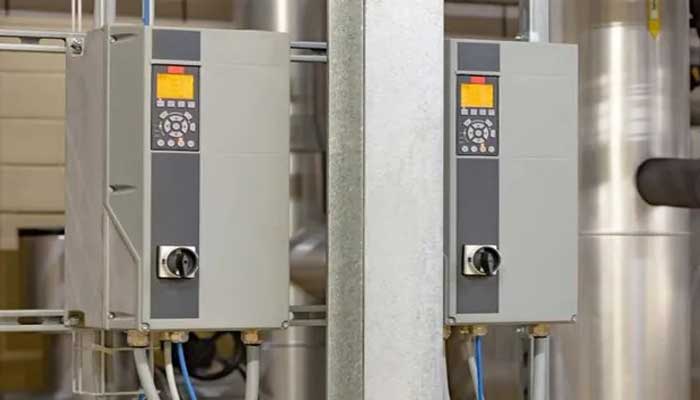VFD For Single Phase Motors
In the modern electrical world, controlling motor speed accurately is critical, and that’s where Variable Frequency Drives (VFDs) come into play. Focusing specifically on single phase motors, this guide will analyze on the role and benefits of VFDs, from enhancing energy efficiency to extending motor lifespan.
Let’s take a closer look at how VFDs bring out the best in single phase motors.
Variable Frequency Drives in Motor Control
In the motor control world, Variable Frequency Drives (VFDs) play a key role. These ingenious devices allow us to manipulate motor speed, boosting efficiency and precision. Through adjusting frequency and voltage, VFDs give us the ability to fine-tune motor operation, cutting down on energy waste and extending motor life.
For businesses and industries that rely heavily on motors, the value of VFDs cannot be overstated. Their transformative impact has redefined motor control, placing VFDs firmly at the heart of modern motor-driven systems.
What is VFD?
A Variable Frequency Drive (VFD) is an essential piece of equipment in the world of motors. It’s essentially a motor control device. VFDs are used to regulate the speed and torque output of an electric motor.
Imagine you have a motor. It’s like an engine for many machines. Without control, the motor can run too fast or too slow. This is where the VFD comes in. The VFD acts like a motor’s personal manager. It tells the motor how fast to go and when to slow down.
The main job of the VFD is to change the frequency of the electricity supply to the motor. It controls the number of electrical waves per second. This frequency variation helps to regulate the speed of the motor.
Why is the VFD so important? It helps to save energy and prolong the life of the motor. It makes sure the motor isn’t running too fast, too slow, or too hard. This results in more efficient performance, and can also reduce maintenance costs.
In summary, the VFD is like the brain of the motor. It controls and adjusts the speed, helping to improve efficiency and extend the motor’s lifespan. Understanding VFDs can lead to significant energy savings, better performance, and longer-lasting motors. It’s an essential piece of technology in the motor control landscape.
Basics of VFD
A VFD is a type of motor controller that drives electric motors by adjusting their speed and torque. It does this by varying the motor’s input frequency and voltage, offering flexibility in motor control.
The basic operation of a VFD includes three stages: conversion, processing, and inversion.
In the first stage, the VFD converts the incoming AC power to DC power. This happens in a section known as a rectifier.
Next, the DC power is processed. This process involves smoothing and filtering the converted power. It’s done in the DC bus section.
Finally, the VFD inverts the DC power back to AC. It does this using a technique called Pulse Width Modulation. This allows the VFD to produce a variable frequency output, giving control over the motor speed.
One of the primary benefits of using VFDs is energy efficiency. They allow motors to only run at necessary speeds, saving on power usage.
What is a Single Phase Motor?
A single-phase motor is an electric motor that operates on a single-phase power source. It’s one of the simplest forms of an electric motor, commonly used in home appliances and small machinery.
Unlike three-phase motors, single phase motors only need one power phase. This makes them ideal for equipment where three-phase power is not available, like in most homes.
These motors use the power that comes in a single, continuous waveform. This waveform is supplied from the electrical grid, which is typically 120V or 240V in most residential settings.
One unique feature of single phase motors is that they lack a self-starting torque. This means they need an additional circuit to start up. Once running, though, they work efficiently.
Single phase motors are popular because they are less complex and more cost-effective than their three-phase counterparts. They are ideal for appliances like refrigerators, washing machines, and power tools.
In short, a single-phase motor is a cost-effective, less complex electric motor. It’s perfect for residential use where low-power operation is needed, making it a common choice for many home appliances.
How Does a Single-Phase Motor Work?
A single-phase motor is an electric motor that operates on a single-phase power source. It’s one of the simplest forms of an electric motor, commonly used in home appliances and small machinery.
Unlike three-phase motors, single phase motors only need one power phase. This makes them ideal for equipment where three-phase power is not available, like in most homes.
These motors use the power that comes in a single, continuous waveform. This waveform is supplied from the electrical grid, which is typically 120V or 240V in most residential settings.
One unique feature of single phase motors is that they lack a self-starting torque. This means they need an additional circuit to start up. Once running, though, they work efficiently.
Single phase motors are popular because they are less complex and more cost-effective than their three-phase counterparts. They are ideal for appliances like refrigerators, washing machines, and power tools.
In short, a single-phase motor is a cost-effective, less complex electric motor. It’s perfect for residential use where low-power operation is needed, making it a common choice for many home appliances.
Types of Single Phase Motors
Let’s discuss the various types of single phase motors:
AC Single Phase Motors
AC single phase motors are commonly used in household appliances like fans, washing machines, and refrigerators. They operate on alternating current supplied by the domestic power grid. Using a VFD with an AC single-phase motor can enhance its performance by controlling its speed according to the load requirements.
Split Phase Motors
Often referred to as resistance start motors, split phase motors use two windings – a start winding and a run winding. The start winding, with a higher resistance, provides a phase shift needed for start-up. Once the motor reaches a certain speed, a centrifugal switch disconnects the start winding. These motors are simple, reliable, and ideal for medium starting torque applications, such as pumps and compressors.
Capacitor Start Motors
In these motors, a capacitor is placed in series with the start winding, creating a greater phase shift and thus higher starting torque. This is perfect for applications requiring high start-up torque, such as air conditioners or high-pressure water pumps. After start-up, the start winding is disconnected using a centrifugal switch.
Capacitor Start Capacitor Run Motors
A step further, these motors use two capacitors – a start capacitor for higher starting torque and a run capacitor for improved efficiency during operation. This type is ideal for demanding applications like conveyors and heavy-duty compressors, where high torque and efficiency are paramount.
Shaded Pole Motors
These are the simplest type of single phase motors. A portion of the pole called the shaded pole, creates a phase shift that induces rotation. Though they have low starting torque, their simplicity, low cost, and quiet operation make them perfect for low-torque applications like fans or small water pumps.
Permanent Split Capacitor (PSC) Motors
A PSC motor uses a run capacitor permanently connected to the auxiliary winding, providing improved efficiency and quieter operation. These are typically used in applications where the motor runs continuously and at a constant speed, such as HVAC systems and refrigeration compressors.
Universal Motors
As the name suggests, these motors can operate on either AC or DC supply. They offer a high-speed and compact design, making them popular in portable power tools, kitchen appliances, and vacuum cleaners.
Applications of Single Phase Motors
Single phase motors are widely used due to their simplicity and affordability. Their applications extend across various industries and everyday appliances.
- VFD in Household Appliances: Single phase motors, often powered by a VFD, are found in several home appliances such as refrigerators, air conditioners, fans, and washing machines. The VFD provides precise control over motor speed, optimizing performance and energy efficiency.
- VFD for DIY and Professional Power Tools: Single phase motors, when paired with a VFD, offer variable speed control for tools such as drills and saws. This flexibility allows for greater precision and adaptability to different tasks.
- Office Equipment and VFD: Office devices like printers and photocopiers often incorporate single phase motors controlled by VFDs. This allows for precise movement control, essential for high-quality printing and copying.
- Agricultural Use of VFDs and Single phase Motors: In the agriculture sector, single phase motors paired with VFDs often power irrigation pumps. By controlling the motor speed, VFDs can optimize water usage and energy efficiency.
- VFDs in Healthcare: Single phase motors, controlled by VFDs, are used in a variety of medical devices. From patient beds to various lab equipment, VFDs allow for precise speed control.
- Automated Systems with VFDs: Automated gates and garage doors often use single phase motors controlled by VFDs. This setup enables variable speed control, improving the system’s efficiency and lifespan.
How to Use a VFD for a Single Phase Motor
Let’s talk about how to use a VFD for a single-phase motor:
- Choosing the Right VFD: The first step in using a Variable Frequency Drive (VFD) with a single-phase motor is selecting the appropriate VFD. It’s crucial to ensure the VFD’s power and voltage ratings match those of the motor. For instance, if your single-phase motor operates at 220V and 1HP, your VFD should be capable of handling these specifications. Additionally, you should check the compatibility of the VFD with single-phase inputs as some VFDs are designed only for three-phase inputs. Always refer to the VFD’s technical datasheet or consult with the supplier or manufacturer to confirm its suitability for your specific motor and application.
- Setting Up the VFD: After choosing the right VFD, you need to wire it correctly to both the power source and the motor. It’s generally recommended to follow the wiring diagram provided in the VFD’s user manual, as incorrect wiring can lead to damage or even safety hazards. Typically, the VFD’s input is connected to the power supply, and the output is connected to the motor. Remember to ensure all connections are secure and that the VFD is grounded correctly to avoid electrical faults.
- Configuring the VFD: With the wiring completed, you’ll need to set up the VFD’s parameters according to your motor’s requirements and the desired operation. This typically involves configuring settings like the motor’s rated voltage, rated power, rated speed, and acceleration and deceleration times. By properly setting these parameters, you can ensure the VFD will control the motor’s speed and torque accurately and efficiently. Some VFDs also offer advanced settings like energy-saving modes and automatic fault detection, which can be beneficial in some applications.
- Operating the VFD: After the VFD has been configured, you can start operating it to control the single-phase motor. The VFD’s control panel or digital interface allows you to adjust the motor’s speed, switch the motor’s running direction, and monitor various parameters like the current motor speed and power consumption. It’s essential to keep an eye on these parameters to ensure the motor and VFD are operating within their rated capacities.
- Maintenance: Regular maintenance is critical to ensure the longevity of the VFD and the motor. This can include periodic checks of the wiring and connections, monitoring the operating parameters to identify any signs of abnormal performance, and cleaning the VFD to prevent dust buildup, which could lead to overheating. Also, remember to inspect the motor for any signs of wear and tear or overheating. By maintaining both the VFD and the motor properly, you can ensure efficient operation and extend their service life.
Speed Control of Single Phase Motors
Let’s dive deeper into speed control of single phase motors and the crucial role that a Variable Frequency Drive (VFD) plays in this::
Concept of Speed Control in Single Phase Motors
The speed of a single-phase motor is typically determined by the frequency of the electrical supply and the number of poles in the motor. However, in practical applications, it often becomes necessary to adjust the speed of the motor to match specific tasks. For instance, a fan’s speed may need to be lowered or a pump’s speed adjusted to control the flow rate.
Methods of Speed Control in Single Phase Motors
There are a few ways to control the speed of single phase motors. One can change the number of poles in the motor or alter the supply voltage. Additionally, in certain types of motors, the use of capacitors or varying rotor resistance can affect speed. But these methods have limitations in their effectiveness and practicality.
Role of VFD in Speed Control
The most effective and versatile method for controlling motor speed is by using a Variable Frequency Drive (VFD). A VFD alters the frequency of the power supplied to the motor, allowing precise control over the motor’s speed without affecting its torque.
Importance of VFD for Motors of Different Power Ratings
Whether you’re dealing with a 1HP single phase motor, 3 HP single phase motor, or a larger 10HP motor, using a VFD for speed control is beneficial. For smaller motors like a 1HP or 2HP, a VFD can offer precise control, ideal for applications requiring low speeds or variable speeds. For larger motors like 5 HP single phase motor or 10 HP single phase motor, a VFD not only provides speed control but can also offer improved efficiency and reduced energy consumption. By adjusting the motor’s speed to match the load requirements, the motor doesn’t need to run at full speed constantly, leading to energy savings.
How to Convert Single Phase to Three Phase
In many cases, industrial or commercial operations require three-phase power, which provides a more efficient and balanced power supply. However, not all locations have three-phase power available. Thus, it becomes necessary to convert single-phase power into three-phase.
Using a Phase Converter
A phase converter is a device designed to convert single-phase power into three-phase power. These devices come in several types – rotary, static, and digital, each with its pros and cons. They are a popular solution, albeit a bit expensive, for converting power phases.
Rotary Phase Converters
Rotary phase converters use single-phase power to drive a three-phase generator. These converters are known for their robustness and reliability. They generate a balanced three-phase output and can handle varying loads with little power loss. However, they require regular maintenance due to moving parts.
Static Phase Converters
Static phase converters, unlike rotary converters, do not contain moving parts and are less expensive. However, they only produce about 2/3 of the rated power, which makes them suitable for light to moderate loads. They don’t provide balanced power output, which could impact the performance of sensitive equipment.
Digital or Electronic Phase Converters
Digital or electronic phase converters use advanced power electronics to convert single-phase power to three-phase power. They deliver a balanced three-phase output, which is advantageous for powering sensitive equipment. They are more expensive but provide high efficiency and are compact and quiet.
Using a Variable Frequency Drive (VFD)
VFDs are versatile devices that can not only vary the speed of the motors but can also accept single-phase power input and output three-phase power. They are an excellent choice for applications where speed control is needed alongside phase conversion. However, they need to be correctly sized for the load to work effectively.
Difference Between Three Phase and Single Phase
A single-phase power system is the simplest form of alternating current electric power generation, transmission, and distribution. It utilizes a single alternating current waveform, making it simpler to design and maintain. This type of power is typically used in residential applications, where the demand for electricity is lower.
Single-phase power is more suitable for running motors up to about 5 horsepower; a 1-horsepower motor in a single-phase system requires a large capacitor to operate, while a 3-phase motor does not. The power supply for single-phase systems tends to be lower, usually 120V or 240V, making it ideal for home appliances like refrigerators, televisions, and lights.
Conversely, a three-phase power system uses three separate electric conductors carrying alternating current, which reach their instantaneous peak values at different times. Therefore, it provides a smooth, constant power output, making it more efficient for high-load equipment.
Three-phase power is typically used in commercial and industrial settings, where more substantial and complex machinery is utilized. These machines often need a higher voltage supply, usually 220V, 230V, or 480V, which three-phase systems can easily provide.
Three-phase systems are also more economical and efficient in conducting electrical power. This is because it uses less conductor material to transmit electrical power and delivers power constantly, enabling equipment to run more smoothly.
| Factor | Single-Phase Power | Three-Phase Power |
|---|---|---|
| Nature of power | One AC waveform | Three AC waveforms |
| Power Supply | Lower (120V, 240V) | Higher (220V, 230V, 480V) |
| Power consistency | Pulsed power delivery | Constant power delivery |
| Efficiency | Lower | Higher |
| Cost | More economical | More expensive |
| Applications | Residential appliances, small motors | Industrial machinery, large motors |
| Maintenance | Easier | More complex |
Single Phase Motor Troubleshooting
The Motor Won’t Start
One of the most common issues with single phase motors is failure to start. There can be several reasons behind this problem. It may be due to faulty wiring, a damaged switch or a bad start capacitor. Always make sure to check the power supply first, ensuring it is connected and the fuse is not blown. If the power supply is fine, examine the wiring and switches for any visible damage or loose connections. In some cases, resetting the overload switch, which trips when the motor is overloaded to prevent damage, might resolve the issue. If these steps don’t solve the problem, the issue could be more complex, like a faulty capacitor or a burned-out motor, requiring professional help.
Overheating Motor
Overheating is another common problem faced by single phase motors. It can be caused by several factors like overloading, blocked vents, or even the usage of an improper extension cord. The motor could also be overheating due to a lack of maintenance, as dust and grime can reduce the efficiency of the cooling fan and cause the motor to overheat. Regular cleaning and checking for proper ventilation can help avoid this problem.
Excessive Noise or Vibration
If your single-phase motor is making excessive noise or vibrations, it could indicate a problem. It might be due to a loosely mounted motor, a problem with the bearings, or an unbalanced load. Make sure the motor is securely mounted to avoid unnecessary vibration. Inspect the bearings for wear and tear and replace them if needed. Also, ensure the load is balanced and that the motor is not working beyond its rated capacity.
Motor Running Slowly
If the motor seems to be running slower than usual, it could be due to a low voltage supply or an overloaded motor. Check the voltage supply to the motor with a multimeter. If the voltage is significantly lower than the motor’s rated voltage, it can cause the motor to run slowly. Also, ensure that the motor is not overloaded beyond its rated capacity.
Motor Stalls
Stalling occurs when the motor suddenly stops running while it’s still powered. The main causes can be a drastic drop in voltage, a mechanical defect or the motor being overloaded. Check the power supply to make sure it’s adequate. If the motor is overloaded, reduce the load or upgrade to a motor with a higher horsepower rating. If the problem persists, it could be a mechanical defect in the motor, requiring professional intervention.
Conclusion:
Variable Frequency Drives (VFDs) enhance the versatility and efficiency of single phase motors. Correct VFD selection, setup, and maintenance ensure optimum motor performance. Understanding these fundamentals allows you to leverage technology for better operational efficiency.

